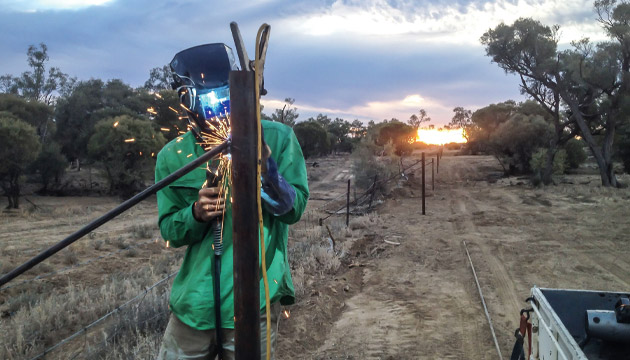Sheep and people are returning to central-western Queensland as a result of a new multi-million-dollar cluster fencing program.
Story + Photos Ricky French
It's late afternoon and central-west Queensland sheep grazier Mike Pratt is out checking his fences, zipping around the perimeter of his 40,000-hectare property with a smile on his face. One simple fence has changed his life in ways of which he could only dream.
Mike has been on his property, 150 kilometres south-west of Longreach, for 23 years. Traditionally, it's some of the best sheep country in the state. However, from 2010, an explosion of wild dog numbers had been ravaging Mike's sheep. Like many other graziers in the area, he watched helplessly as the pests devastated the region's sheep industry and, with it, the communities the industry sustains.
Sheep numbers in western Queensland dropped more than 90 percent between 1990 and 2018, from more than 6 million to around 450,000. Lambing rates plummeted to just 15%. According to AgForce Queensland, wild dogs are estimated to cost the Queensland grazing industry upwards of $100 million per year.
The loss of sheep has meant agricultural jobs have declined and towns have shed people. The population in the Barcoo region dropped 25% between 2011 and 2015, and in Blackall-Tambo, 15%.
Mike went from averaging 12,000 sheep to a low point in 2015 when he had to destock completely. It was a situation exacerbated by the drought that had begun in 2012.
"The catalyst was when we lost 200 ewes to wild dogs over a fortnight," Mike says. "So we sent the rest away on agistment and I made the decision that the sheep weren't coming home until we could protect them."
Protection came in the form of a new cluster fencing project rolled out across central-west Queensland by the Remote Area and Planning Board (RAPAD), representing seven local governments. In partnership with state and federal governments, the project has so far delivered 23 fence clusters, protecting around 1.16 million ha of grazing country and creating 73 new jobs. Each 1.5-metre-high fence cluster encloses two or three properties and is funded 65% by landholders and 35% by government.
This story excerpt is from Issue #126
Outback Magazine: Aug/Sep 2019










